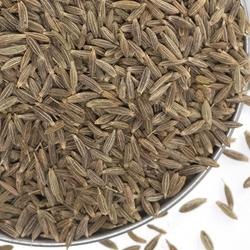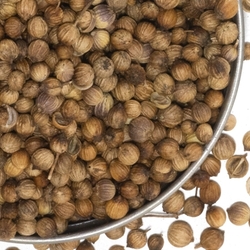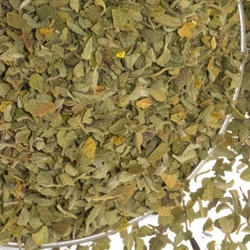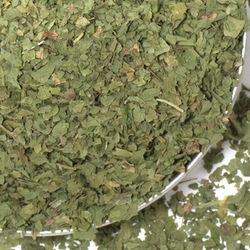A Spicy Guide to New Mexican Cuisine

Southwestern cuisine is a blend of Mexican, Native American, and cowboy influences. Stretching from California in the west to Texas in the east, south to Arizona and to Colorado all the way in the north, this cuisine gives the country some of its spiciest foods. Southwestern food is well known for its use of regionally grown foods coupled with a huge use of spies, herbs, and chiles. It is widely considered the biggest and best cuisine across the United States, but of course it has a variety of sub cuisines that fall underneath the wider Southwestern umbrella. One of these sub cuisines is New Mexican, a legend on its own with influences from Pueblo Native American, Spanish, and Mexican cuisines.
Before the arrival of Europeans to America, New Mexico's borders overlapped with the areas belonging to the Navajo, Mescalero and Chiricahua tribes. The Spaniards that immigrated to these areas infused their cuisine with the local foods and cultures. When the Mexican-American war took place in 1846, American forces occupied California, New Mexico, and parts of Northern Mexico. Mexico City was captured, and the United States ended the war with victory, taking New Mexico as its own. The cuisine there began to shift then to encapsulate more American tastes.
New Mexican food has evolved along a different culinary path that is familiar and yet unique to the Tex-Mex cuisine of the nearby Texas. New Mexican cuisine is much more influenced by the Native American and Hispanic flavors and traditions than those of Mexican cuisine. The eastern United States was busy developing an identity different from their cultural roots but the Spaniards who settled in New Mexico embraced their own culture and tastes while also welcoming in some aspects of the surrounding Native American communities' food preferences, which included many ingredients that had been grown in New Mexico for hundreds of years. This is one of the first examples of fusion cuisine in this country, and fusion cuisine continued to be rather uncommon for many years until a more recent interest spike in food trends that favor this style of combining two or more cuisines together. New Orleans was a noted exception to this generalization, with their Cajun/Creole culinary history closely resembling the way that New Mexican cuisine was brought together.
The 1980s saw a unique period of growth for southwestern cuisine that is unlikely to ever be replicated again, thanks to the rapid advances in technology today. As chain restaurants were able to expand and grow in popularity during the 80s, food trends took over the whole landscape of the United States instead of little sections like it does today. New Mexican and Southwestern cuisine spread across the US slowly but steady, gaining fans and popularity over a long time, lending to a fondness for the cuisine that is sure to outlive chain restaurants. Nowadays, food trends hit hard and fast, but you are unlikely see those trends as a permanent fixture on a restaurant menu in the way that you continue to see Southwestern food. Rainbow bagels are a good example of a food trend that likely won't live past a few years across the country in the way that southwestern food does.
New Mexican Chiles
New Mexico has a spicy reputation for having some of the most chile-filled food in the country. It is the state with its official question asking, "red or green?" in reference to what chile you want with your meal. New Mexican chiles are either red or green when picked, depending on how ripe they are and what part of the season they are picked during. Today there are over one hundred varieties of New Mexican chiles, with much thanks attributed to the Chile Pepper Institute of New Mexico State University. This includes the famed Hatch chiles, grown in the Hatch region of New Mexico almost exclusively by a family of farmers who are dedicated to breeding new, different chiles for future generations of chile lovers to enjoy. The Chile Pepper Institute is dedicated to education and research related to New Mexican Chile Peppers. They have been contributing to these fields of chile cultivation and variety for more than 130 years.
New Mexican chiles are native to Central Mexico and they are members of the chile species Capsicum annuum. Aside from the Hatch chiles, another group of famed chiles come from New Mexico. These chiles are grown in Chimayo, a tiny community nestled in the Sangre de Cristo Mountains located 30 minutes north of Santa Fe.
Southwestern cuisine in general uses chiles as a supporting flavor or ingredient, but in New Mexican cuisine, chiles absolutely dominate. You will find chiles in everything at nearly every meal time. Don't be surprised if you even find chiles in your ice cream in New Mexico. Much like the famous wine region of Sonoma, California, where the flavors of the grapes are influenced by soil characteristics, so too are the chiles of New Mexico influenced by the soils in which they grow. Those who live in New Mexico know from birth what much of the United States is just learning today- chiles are a not only a food, they are a lifestyle. People in this region are sometimes quoted as saying "chiles are life here" and that is extremely accurate. Just ask any one of the farmers that spends every waking moment dedicated to the cultivation of this state's legendary chiles.
New Mexican Cuisine
The staple ingredients found in New Mexican cuisine are most often grown locally. These ingredients include chiles, corn, and beans, with corn being the starch of choice. In other southwestern cuisines, you will find that rice holds the same popularity as corn in New Mexican cuisine. Blue corn is especially popular, with colors ranging from light grey to almost black. Also known as Hopi Maize, this corn was originally developed by the Hopi Native Americans. It can be ground into corn meal and has a sweeter flavor. Blue corn is healthier than its yellow or white cousins and contains about 20% more protein than either of those. Some other core ingredients in this cuisine include cheese, tortillas, onions, beef, chicken, and pork. The two state vegetables are chiles and pinto beans, and this is reflected nicely in the cuisine.
Differences Between Red and Green Chiles
These are the two stars of New Mexican cuisine, but what's the difference really? Green chiles are only grown for a little while and they retain their green color by having their ripening stunted. The green chile is made into a spicy sauce that can be served over burritos, cheeseburgers, enchiladas, and stuffed sopapillas. They are left whole and fried, used to make chile rellenos, stuffed into lasagna, or used in making stew with ground beef and potatoes. Green chiles can also be found in breads and as a topping on pizzas.
Red chiles are those which have fully ripened on the vine. They are completely mature before harvesting, which results in the deep, rich red color and a mellower, sweeter flavor. Once picked, the chiles are strung on ristras to dry. Once dried, the chiles can be rehydrated and pureed into a smooth, mellow sauce that has many of the same applications as a green chiles sauce, but is also a famous ingredient in huevos rancheros or tamales.
That famous question "red or green?" can apply to the whole chile or just the sauce, as you will find either as part of the overall meal. Sometimes you will even find both! Christmas is the appropriate response if you want to have a mix of both color chiles with your food.
Herbs and Spices
The most frequently used spices in New Mexican recipes are cumin, coriander, onion powder, and garlic powder. It is best to use whole cumin and coriander seeds and roast them lightly in a hot pan or skillet before grinding them into powder for added rich, nutty flavor.
As for herbs, you will find cilantro is quite popular. This is an herb that many people love or love to hate. Some people claim cilantro I delicious while others claim it tastes soapy. Fresh cilantro is often more popular than dried, but it has a terribly short shelf life and dried cilantro is easier to deal with. Cilantro can be kept alive for about a week or so if the fresh branches are stored in a glass of water in the fridge. Oregano is another popular herb used in New Mexican cooking, with Mexican oregano being the preferred kind. It is earthy and quite flavorful, making it a delicious and popular companion for pinto beans. Epazote is popular with flavoring beans, but it is sometimes hard to find.
New Mexican Recipes
It is hard to talk about New Mexican cuisine without giving you an idea of some of the dishes you will find in the cuisine. Starting with an absolute staple, you will love Chile Colorado, a delicious red sauce made from the red chiles of New Mexico that can be served with nearly every meal. If you are searching for a casual lunch dish, look no further than incredibly flavorful Chili Enchiladas. For a hearty dinner, this Sweet Chickpea Chili is super to delight. And if you just want to dip your toes in with a new condiment, try out Chipotle Adobo Sauce. This might even be good stirred into some sweet dessert, or as a cheesecake topping!







